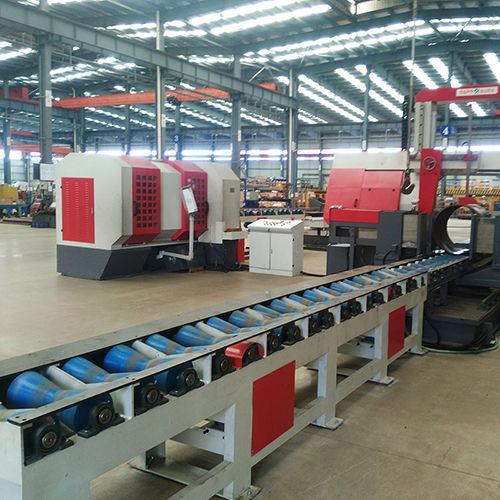
Pipe Conveying System for End Beveling Machine
4999.00 - 9999.00 USD ($)/Set
Product Details:
- Power Source Electricity
- Operating Type Automatic
- Usage & Applications Industrial
- Click to view more
X
Pipe Conveying System for End Beveling Machine Price And Quantity
- 1 Set
- 4999.00 - 9999.00 USD ($)/Set
Pipe Conveying System for End Beveling Machine Product Specifications
- Electricity
- Industrial
- Automatic
Pipe Conveying System for End Beveling Machine Trade Information
- 10 Days
Product Description
A transverse pipe automatic conveying system typically refers to a method of transporting materials or substances through pipes laid horizontally or diagonally across a certain distance. This system is commonly used in industries such as mining, agriculture, and manufacturing for the transportation of bulk solids, liquids, or gases.
Here's how it generally works:
1. Piping Network: The system consists of a network of pipes laid out in a transverse (horizontal or diagonal) configuration, connecting the source of the material to its destination.
2. Material Loading: The material to be transported is loaded into the system at one end. This could be done manually or through automated processes such as conveyor belts or chutes.
3. Conveyance Mechanism: Once inside the pipes, the material is propelled forward through various means. This could involve the use of air pressure (pneumatic conveying), gravity, or mechanical systems such as augers or screw conveyors.
4. Transportation: The material travels through the pipes, guided by the layout of the system, until it reaches its destination.
5. Unloading: At the destination, the material is unloaded from the pipes. Again, this can be done manually or automatically, depending on the setup.
Transverse pipe conveying systems offer several advantages:
1. Efficiency: They provide a more efficient way of transporting materials over long distances compared to traditional methods like trucks or conveyor belts.
2. Space-saving: Since the pipes can be laid underground or overhead, they save space on the ground compared to surface transportation methods.
3. Environmental Benefits: Depending on the material being transported, these systems can be more environmentally friendly, reducing pollution and carbon emissions.
4. Reduced Material Loss: Enclosed pipes help prevent material spillage and loss during transportation.
Tell us about your requirement

Price:
Quantity
Select Unit
- 50
- 100
- 200
- 250
- 500
- 1000+
Additional detail
Mobile number
Email






 Send Inquiry
Send Inquiry  Call Me Free
Call Me Free 
